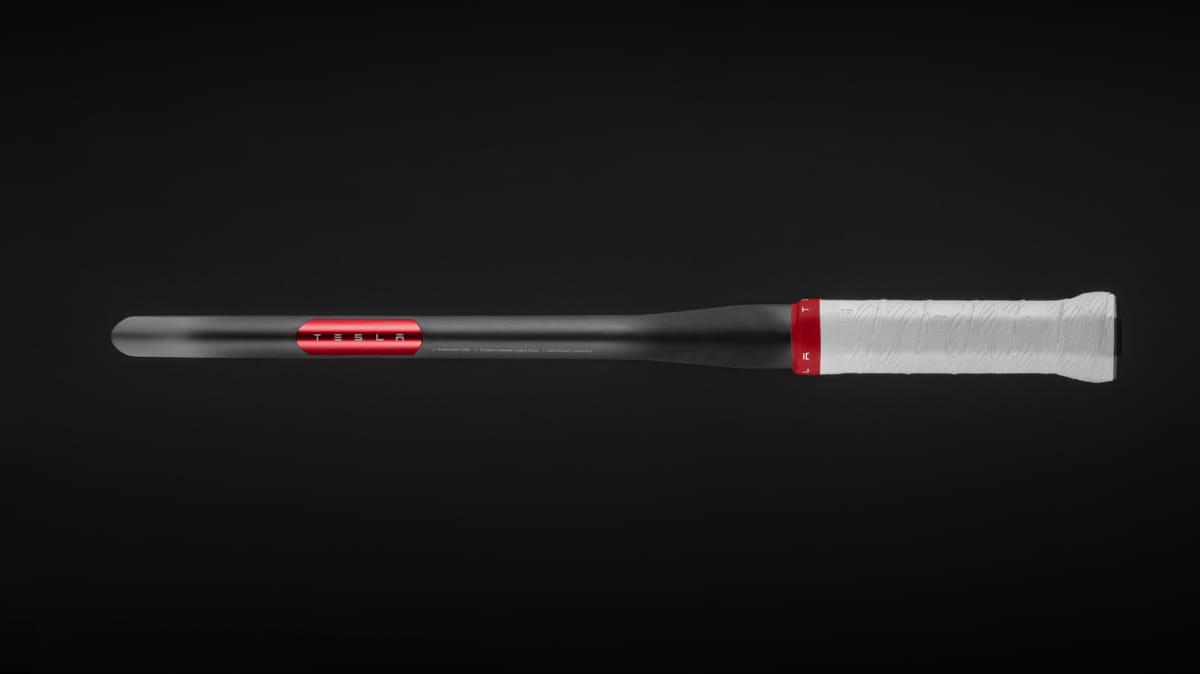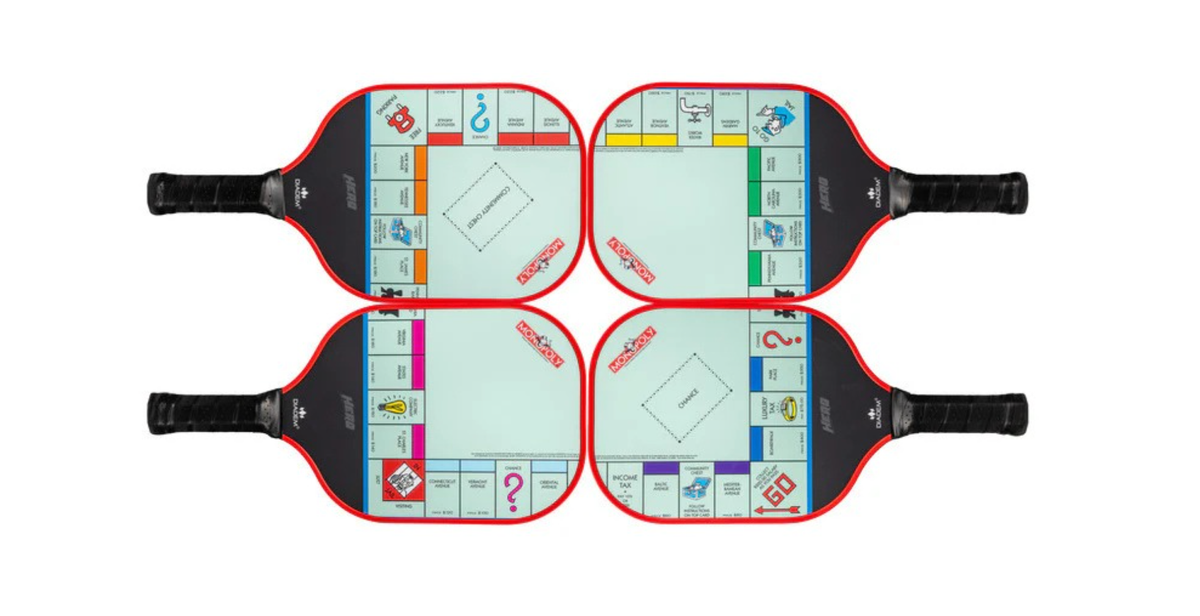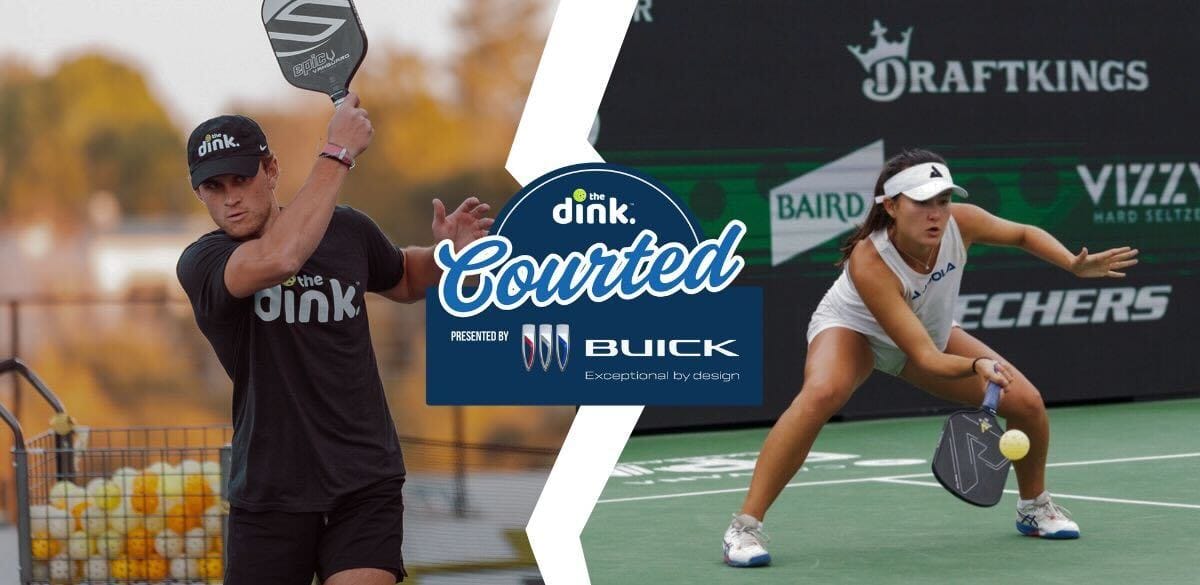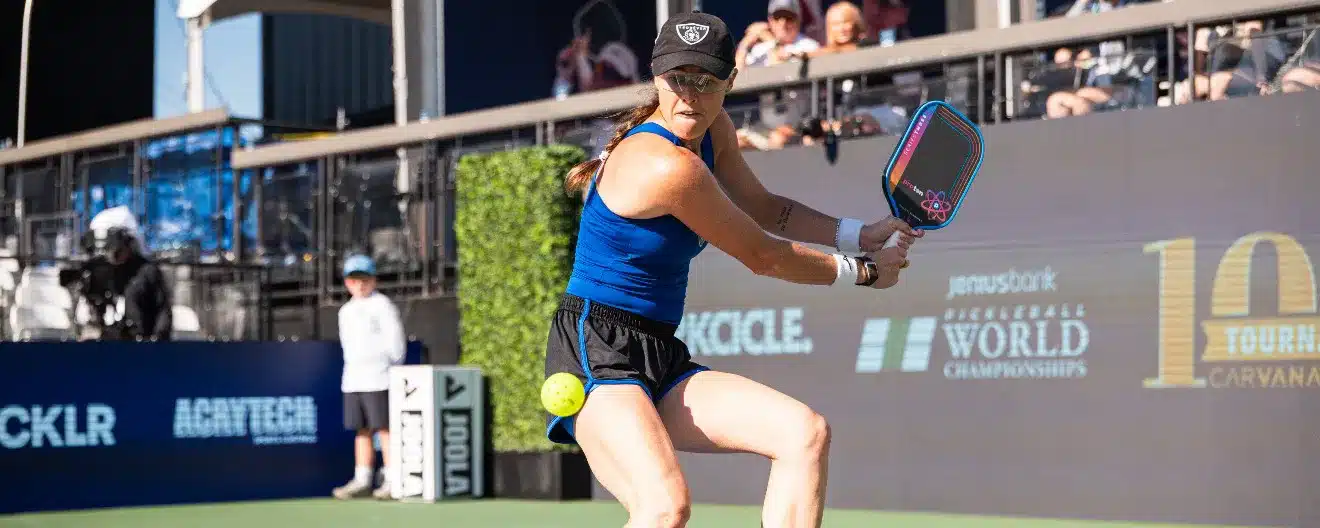LINK TO 2021 Change Document (81 pages of explanations)
Here is the listing of the 125 Rule Changes and what rule number they relate to. Happy Reading.
Section 2: Court and Equipment
#1: 2.A.4. Wheelchair Playing Surface Dimensions
#2: 2.E.2. Paddle Hitting Surface
#3: 2.E.5.c. Paddle Markings
Section 3: Definitions
#4: 3.A.2. Coaching
#5: 3.A.9. Ejection
#6: 3.A.10. Expel
#7: 3.A.13. Forfeit
#8: 3.A.15. Hinder
Scenario A: Server drops ball; rolls under bleachers
Scenario B: Players stops to avoid collision with adjacent team
Scenario C: Player stops to avoid a collision, referee claims no hinder
Scenario D: No official, players agree cracked ball impacted rally
#9: 3.A.16. Imaginary Extension
#10: 3.A.19. Live Ball/In Play
#11: 3.A.20. Momentum
#12: 3.A.21. Non-Volley Zone (NVZ)
Scenario: Player steps in opponent NVZ after ball is dead
#13: 3.A.25. Plane of the Net
#14: 3.A.20. Retirement
#15: 3.A.40. Technical Foul
#16: 3.A.44. Profanity
#17: 3.A.45. Verbal Warning
#18: 3.A.46. Third Shot
#19: 3.A.47. Wheelchair Player
Section 4: Serve, Service Sequence, and Scoring Rules
#20: 4.A.1. Entire Score Called
Scenario A: Serve occurs in middle of referee’s score call
Scenario B: Serve occurs before start of score call
#21: 4.A.2. Feet Placement at Serve
#22: 4.A.5. Serve Contact Not Above Waist
#23: 4.A.6. Serve Placement (No “Let” Serves)
#24: 4.A.8. Provisional Drop Serve
#25: 4.A.8.a. Drop Serve Release
Scenario A: Referee sees release; receiver does not see release
Scenario B: Server switches serve styles
Scenario C: Server lets ball bounce twice before serving
#26: 4.A.8.b. Drop Serve cannot be propelled downward
#27: 4.A.10.c. Drop Serve forehand or backhand; no restrictions
#28: 4.B.9. Serving team can ask position questions
Scenario A: Server asks question; ref calls time; server serves; no fault
Scenario B: Server’s partner asks question after service motion started
#29: 4.B.10. Receiving team can ask position questions
Scenario: Receiver’s partner asks question just before serve occurs
#30: 4.B.11. Incorrect Player or Position faults
Scenario A: Wrong server serves from wrong position; ref notes both faults
Scenario B: Wrong server/receiver; ref faults server; no mention of receiver
Scenario C: Wrong server/receiver; faults server only after return of serve
#31: 4.B.12. Incorrect Player/Position corrected after rally, game, or match
Scenario A: Corrected error before game 2 starts
Scenario B: Corrected error after match has ended
#32: 4.D.2. Server’s partner calls score
Scenario: Server inadvertently calls score when partner has been otherwise
#33: 4.E.2. Serving team changes serving courts
Scenario: Server serves during court change repositioning; no fault
#34: 4.K. Wrong score called before Third Shot occurs
Scenario: Wrong score called, return goes into net, no fault
#35: 4.K.2. Challenging score call after serve and before Third Shot
Scenario A: Ref calls wrong score; receiver stops play after return
Scenario B: After serve, ref ignores question by receiver’s partner
#36: 4.K.3. Player stops play after Third Shot to challenge score call
Scenario A: Receiver challenges wrong score call after Third Shot
Scenario B: Player stops play after Third Shot
#37: 4.M.3. Served ball touches permanent object before hitting ground
#38: 4.M.5. Served ball lands on NVZ
#39: 4.M.10. Serving team calls time-out after serve occurs
#40: 4.M.11. Server fault for serving during score call
Scenario A: Server faults for serving during score call
Scenario B: Server serves before score call starts; no fault
#41: 4.N.3. Receiving team calls time-out after serve occurs
Section 5: Service and End Selection
#42: 5.A.1. Choosing serve, receive, side or defer
#43: 5.A.2. Changing starting servers
Scenario A: Team changes servers and band; game starts; no fault
Scenario B: Team notifies about change; forgets and “no-band” serves
Scenario C: Referee notices change, inquires and notates accordingly
#44: 5.B.6. Mid-game end change with coaching allowed
#45: 5.B.7. Technical Foul no impact on end change
Scenario A: 6th point end change; T.F. committed; end change remains
Scenario B: T.F. committed, no server position change, ref calls fault
Section 6: Line Call Rules
#46: 6.D.1. Player makes initial line call; asks opponent’s opinion
Scenario A: Player makes call, asks opponent then ref; player’s call stands
Scenario B: Player makes call; asks opponent’s opinion; opponent call stands Scenario C: Player makes call, asks opponent then ref; opponent call stands
Scenario D: Player makes call, asks opponent then ref, ref’s call stands
#47: 6.D.3. No initial player call then appeal to the referee
Scenario: No call; appeal to referee, then opponent; no clear call; ball is in
#48: 6.D.5. Appeal of line calls before next serve occurs
#49: 6.D.6. Player asks opponent’s opinion on a line call
Scenario A: Opponent’s opinion call is “in”; ref did not see; ball is “in”
Scenario B: Opponent’s opinion call is “in”; ref calls “out”; ball is “out”
#50: 6.D.7. Calling balls “in” or “out”
Scenario A: Team sees a space between ball/line
Scenario B: Team not certain of ball being “out”; plays ball
#51: 6.D.8. Calling balls out promptly (“let” wording removed)
#52: 6.D.10. “Out” calls signaled by voice and/or hand signals
#53: 6.D.13. Player overrule of opponent, partner, or officiating team
Scenario: Player overrules referee’s “in” call as “out”
Section 7: Fault Rules
#54: 7.B. Hitting ball into net on player’s side of net; dead ball when hits ground Scenario A: Ball spins on top of net; opponent crosses plane; fault called
Scenario B: Ball spins on top of net; opponent touches net; fault called
#55: 7.G. Touching the net/net system/opponent’s court while ball is live
#56: 7.H. Ball contacting player other than paddle hand(s)
Scenario: Player’s hands are loosely touching paddle when hit
#57: 7.N. Illegal carry after serve (allowing “sling” serve)
#58: 7.O. Hinder called by player (“let” wording removed)
Section 8: Dead Ball Rules
#59: 8.B. Faults called and committed
Scenario: Ball hits player; hitter touches net; ref calls fault
#60: 8.D. Ball hitting permanent object after bouncing in opponent’s court
#61: 8.E. Faults can only be committed during live ball (NVZ exception)
Scenario A: Player serves during re-positioning; no fault called
Scenario B: Server serves before start of score call; no fault called
Section 9: Non-Volley Zone Rules
#62: 9.C. Volleying player contacts anything touching the NVZ
Section 10: Time-Out Rules
#63: 10.A.3. Calling time-outs before the serve occurs
Scenario: Referee hears the “T” sound of time-out before the serve
#64: 10.A.4. No penalty for calling time-outs when none remain
Scenario A: Team calls time-out with none remaining
Scenario B: Incorrect receiver calls T.O; changes receiver; no fault
#65: 10.B.3.c. One player-requested medical time-out per match
Scenario: Referee generated M.T.O. not charged to player
#66: 10.C. Continuous play and breaks in-between rallies
Scenario A: Referee allows quick drinks; gets players back quickly
Scenario B: Ref allows break; players delay; ref calls score
#67: 10.E.1. Players take time-outs in-between games
Scenario A: Team uses 1 of 2 T.O.’s between games
Scenario B: Rec. team does not return; T.O’s expire, ref starts game
Scenario C: Srv. team does not return; T.O.’s expire, ref starts game
#68: 10.H.1. No time-outs (medical or regular) taken before match start
Scenario: Player calls T.O. immediately after match starts
Section 11: Other Rules
#69: 11.A. Double hits allowed before serve
#70: 11.E. Broken/cracked ball impacting rally
Scenario A: Ref calls score; team checks ball; 10-sec expires; fault called
Scenario B: Ref calls score; team asks ref to check ball; no fault called
#71: 11.I. Plane of the net fault while ball is in play
Scenario A: Player crosses plane, hits next shot before getting back over
Scenario B: Player crosses plane, takes time to get back across
#72: 11.I.1. Ball must travel back over plane of net before crossing
Scenario: Player legally crossing plane contacts opponent; fault called
#73: 11.K. Player contacting net post/system commits fault
#74: 11.L.4. Ball bouncing back over net must bounce twice to become dead
#75: 11.L.5.a. Fault for ball hitting horizontal bar/base before going over net
#76: 11.L.5.b. Replay for ball bouncing on court and hitting horizontal bar/base
#77: 11.N. Fault for player using more than one paddle
#78: 11.O. Fault for player not having possession of paddle when ball is hit
Section 13: Tournament Management and Officiating
#79: 13.A.1. Players may appeal any referee ruling/decision to T.D
#80: 13.B. Tournament briefing from TD to players
#81: 13.B.1. Rule exemptions request
#82: 13.C. Referee duties and player appeals
#83: 13.C.2. Player overrule of officiating team
#84: 13.C.4.b. Referee noting non-standard court conditions
#85: 13.C.5.h. Allowance for the new game forfeit
#86: 13.D.1.c. Players calling actual faults on themselves
Scenario A: Player informs ref of fault before next serve occurs
Scenario B: Player calling “ghost” fault; ref calls no fault
#87: 13.D.3.b. Players can overrule referee call
#88: 13.D.3.c. Replay if officiating team cannot render line call
#89: 13.E.1. TD determines if line judges are used
#90: 13.E.2. Line judges call service foot faults and line faults
#91: 13.E.3. Referee can immediately canvass all LJ’s for blocked signal
#92: 13.E.4. Replay for referee overrule of LJ “out” call
Scenario: Referee overrules LJ “out” call; calls for replay; no exceptions
#93: 13.E.5. Player overrule LJ “out” call as “in”, replay occurs
#94: 13.F.1. No LJ’s; ref cannot rule; initial call stands; no call is “in”
#95: 13.G.1. Verbal warning for profanity
Scenario: Referee issues verbal warning for profanity
#96: 13.G.1.a. Removal of “demeaning” from original rule
#97: 13.G.1.b. Visible gestures technical warning
#98: 13.G.1.c. Excessive arguing expanded
#99: 13.G.1.d. Ball abuse technical warning expanded
#100: 13.G.1.e. Delay of game simplified
#101: 13.G.1.f. Unnecessary appeals simplified
#102: 13.G.1.i. Technical warnings for paddle issues allowed
Scenario: Player tosses paddle; gets technical warning
#103: 13.G.1.j. Coaching when not allowed
#104: 13.G.2. Technical Foul point deduction
Scenario: T.F. after end change; end change remains in place
#105: 13.G.2.a. Paddle throwing expanded
#106: 13.G.2.b. Extremely objectionable language expanded
#107: 13.G.2.c. Threats or challenges expanded
#108: 13.G.2.g. Throwing/hitting ball expanded
#109: 13.G.3.c. Technical Foul point deducted
#110: 13.H.1. Insertion of a game forfeit for “3 Strikes”
Scenario A: Team gets forfeit or 1 TW and 1 TF
Scenario B: Team wins game 1/forfeits game 2; scoring guidelines
#111: 13.H.1.c. Games to 15 or 21 forfeit, same as match forfeit
#112: 13.H.2. Game forfeit 10-minutes; match forfeit 15-minutes
#113: 13.I.1.a. 2 TW’s plus a TF equals match forfeit (“4 Strikes”)
Scenario: Team gets 2 TW’s and 1 TF during match; match if forfeited
#114: 13.I.1.b. 2 Technical fouls equals match forfeit
#115: 13.I.2. Behavior resulting in match forfeits section
#116: 13.I.2.a. Making physical contact with opponent or official
#117: 13.I.2.b. Throwing paddle match forfeit guidelines
#118: 13.J. Rules interpretations and player allowed challenges
#119: 13.K. Line judge removal guidelines
#120: 13.K.1. Referee removal guidelines
#121: 13.M. TD player ejection guidelines
#122: 13.M.1. Slurs related to ejections
#123: 13.M.2. Injury to player, official, spectator due to paddle abuse
#124: 13.M.3. Spitting or coughing ejections
#125: 13.M.4. Players not exhibiting “best effort”
If you are reading this, then good job – you made it all the way through the 125 2021 pickleball rule changes, phew! These edits are definitely a long way away from Barney McCallum’s 1972 one-page pickleball rules.
Here’s some trivia for you… Can you guess how many rule changes there were in 2020? Here’s the link
Answer: 94!
Anuncie Aqui / Advertise Here
Sua marca para o mundo Pickleball! / Your brand for the Pickleball world!

 English
English  Spanish
Spanish  Portuguese
Portuguese  German
German  Italian
Italian  Japanese
Japanese  French
French  Polish
Polish  Russian
Russian  Netherlands
Netherlands  Hungarian
Hungarian  Turkish
Turkish  Videos
Videos  All Pickleball
All Pickleball








 English (US) ·
English (US) ·  Portuguese (BR) ·
Portuguese (BR) ·